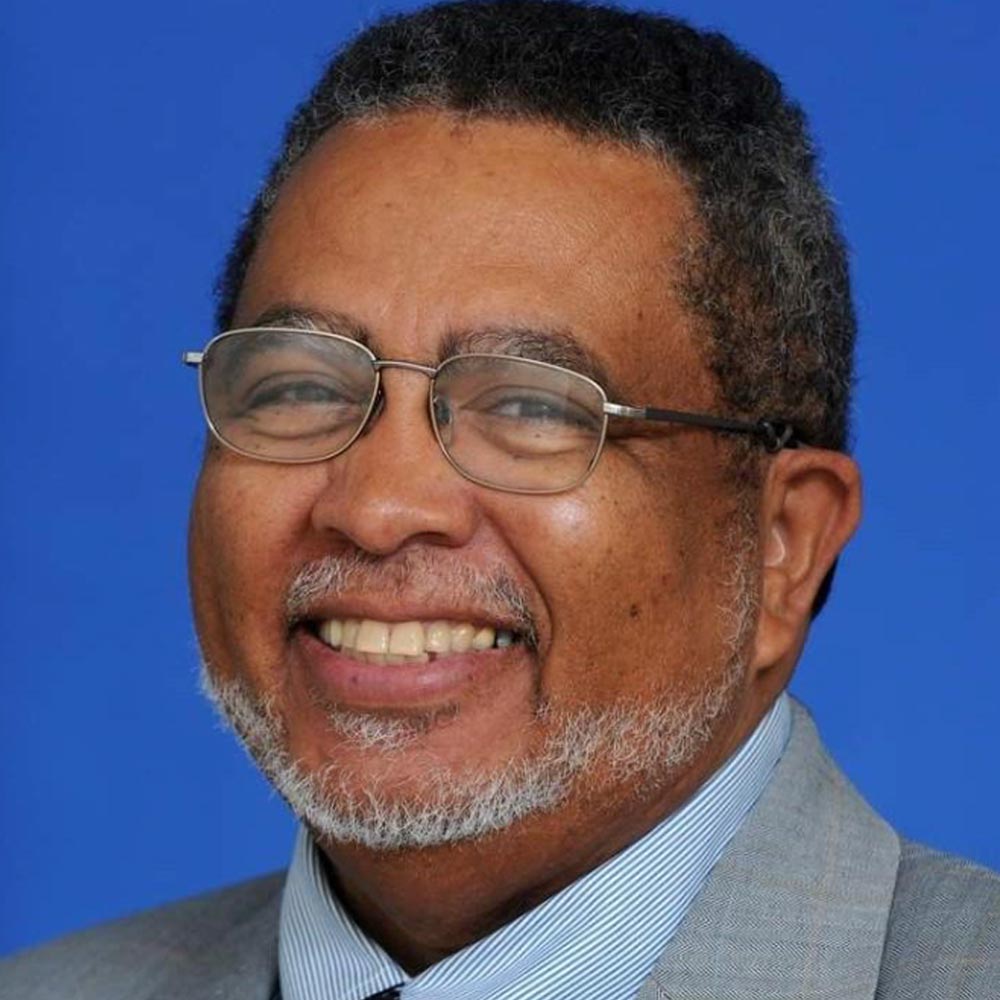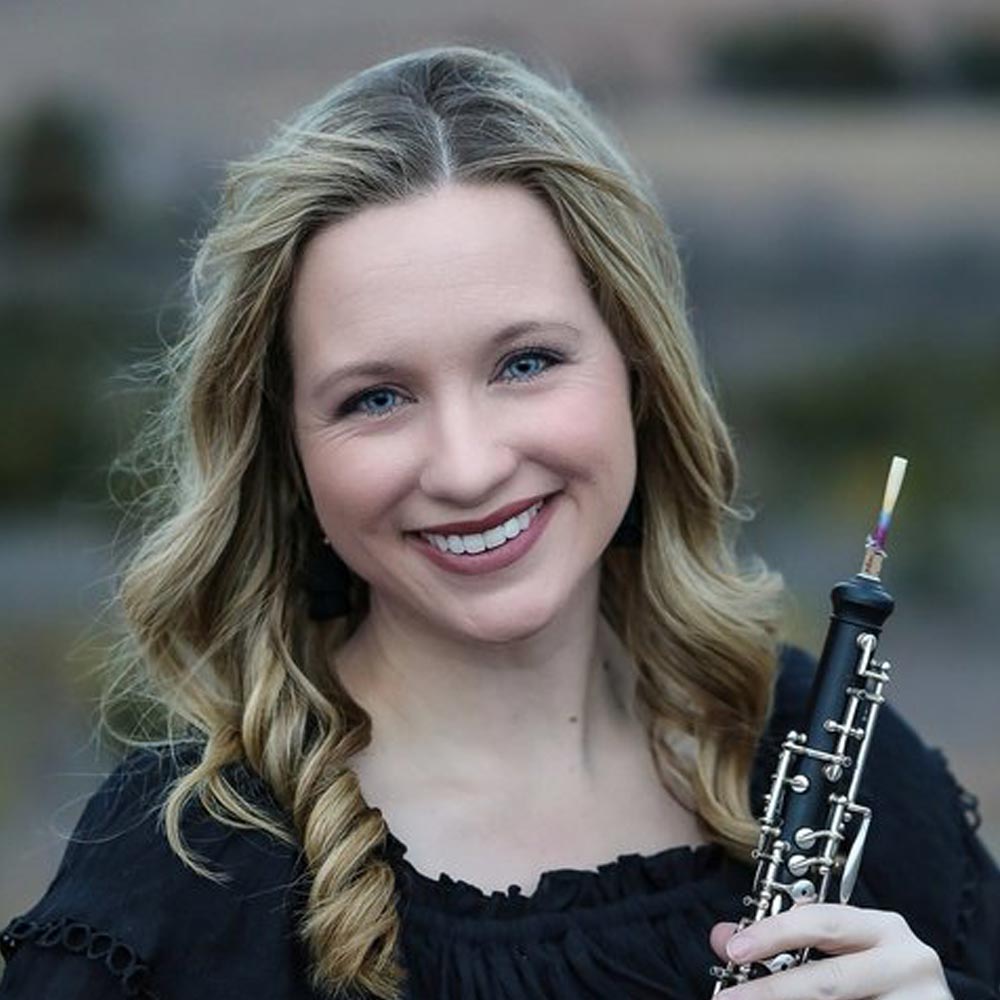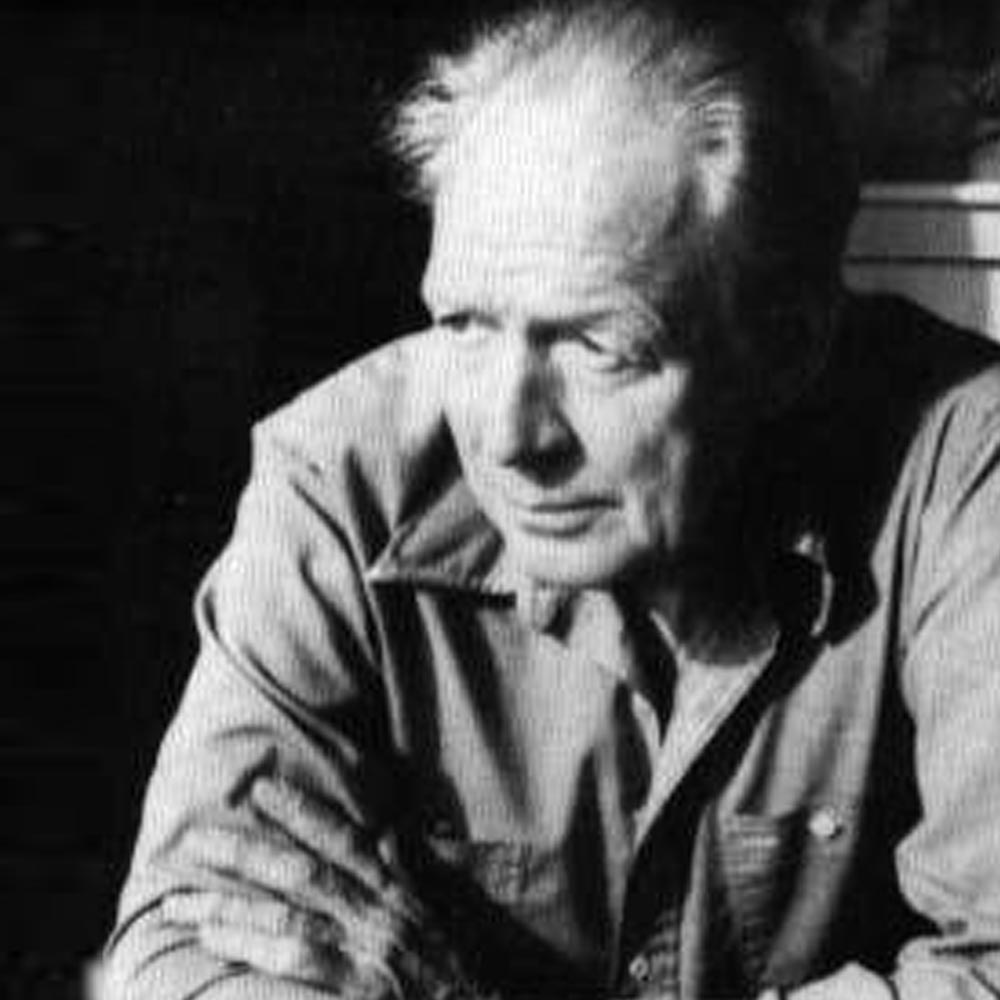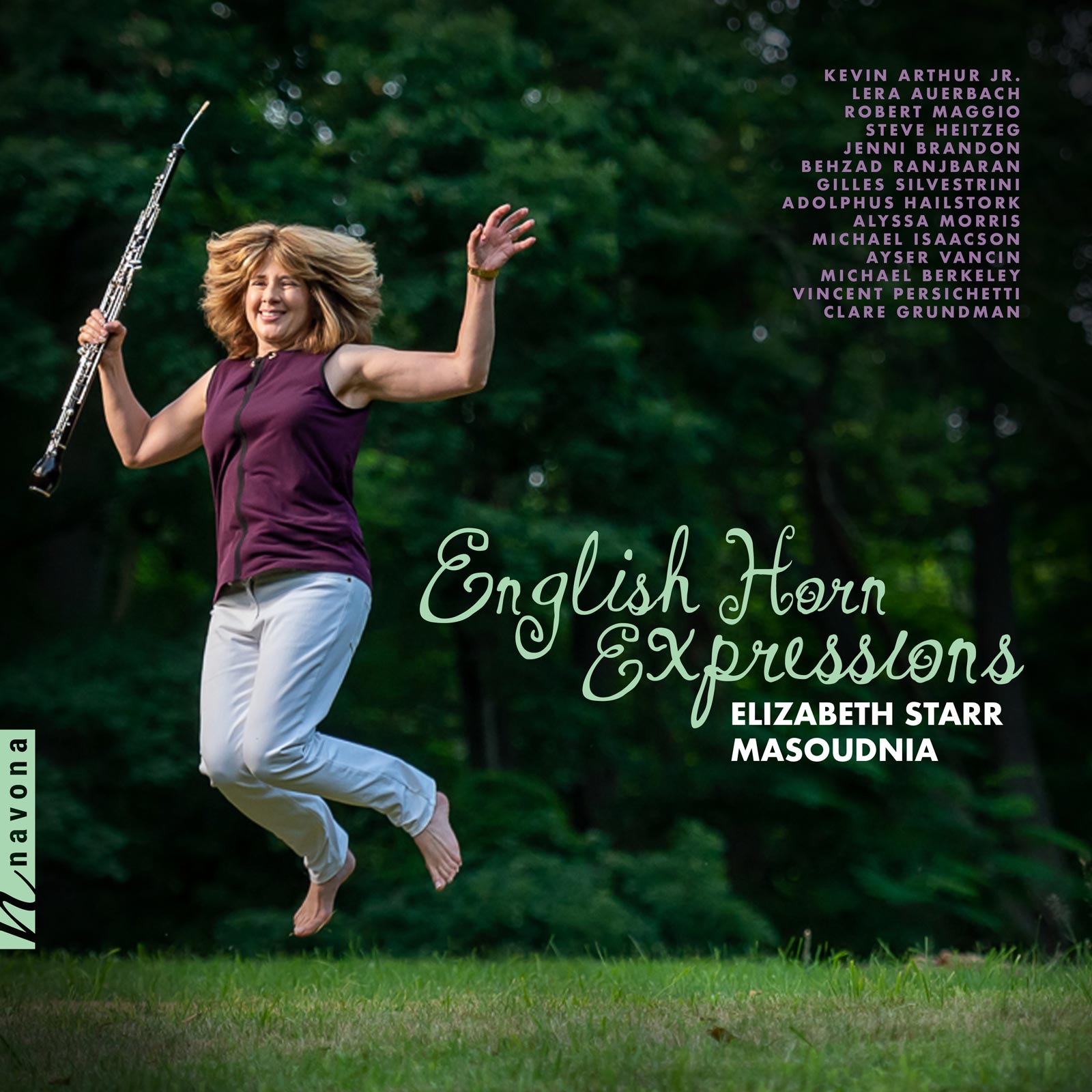English Horn Expressions
Elizabeth Starr Masoudnia English horn
Kevin Arthur Jr. composer
Lera Auerbach composer
Robert Maggio composer
Steve Heitzeg composer
Jenni Brandon composer
Behzad Ranjbaran composer
Gilles Silvestrini composer
Adolphus Hailstork composer
Alyssa Morris composer
Michael Isaacson composer
Ayser Vancin composer
Michael Berkeley composer
Vincent Persichetti composer
Clare Grundman composer
Deeply expressive and melodic, the English horn boasts a unique texture in the woodwind family. On Elizabeth Masoudnia’s aptly titled ENGLISH HORN EXPRESSIONS, the instrument has found itself in the spotlight, guided by Masoudnia’s soothing tone, and lending a distinguished voice to the works of several composers. The vast lyrical range of the English horn shines throughout this album, emphasized by Masoudnia’s adept artist skill set. Containing works inspired by paintings and poetry, works written explicitly for Masoudnia, and more, the Philadelphia native’s Navona Records debut carries a healthy balance of sentimentality and musical prowess.
Listen
Stream/Buy
Choose your platform
Track Listing & Credits
| # | Title | Composer | Performer | |
|---|---|---|---|---|
| 01 | The River | Kevin Arthur Jr. | Elizabeth Starr Masoudnia, English horn | 5:11 |
| 02 | The Prayer | Lera Auerbach | Elizabeth Starr Masoudnia, English horn | 5:26 |
| 03 | Dance on the Volcano | Robert Maggio | Elizabeth Starr Masoudnia, English horn | 5:28 |
| 04 | Flowering Prairie (Crocus) for English horn | Steve Heitzeg | Elizabeth Starr Masoudnia, English horn | 2:22 |
| 05 | In the City at Night | Jenni Brandon | Elizabeth Starr Masoudnia, English horn | 5:46 |
| 06 | Grave Lamentoso | Behzad Ranjbaran | Elizabeth Starr Masoudnia, English horn | 3:14 |
| 07 | Sentier dans les bois | Gilles Silvestrini | Elizabeth Starr Masoudnia, English horn | 2:06 |
| 08 | Le Ballet Espagnol | Gilles Silvestrini | Elizabeth Starr Masoudnia, English horn | 3:43 |
| 09 | Siciliana | Adolphus Hailstork | Elizabeth Starr Masoudnia, English horn | 5:42 |
| 10 | Jimson Weed | Alyssa Morris | Elizabeth Starr Masoudnia, English horn | 3:14 |
| 11 | Chants de la Terre | Ayser Vançin | Elizabeth Starr Masoudnia, English horn | 3:51 |
| 12 | Reveil | Ayser Vançin | Elizabeth Starr Masoudnia, English horn | 2:55 |
| 13 | Snake | Michael Berkeley | Elizabeth Starr Masoudnia, English horn | 4:16 |
| 14 | A Quiet Prayer | Michael Isaacson | Elizabeth Starr Masoudnia, English horn | 4:32 |
| 15 | Parable for Solo English Horn (Parable XV) op.128 | Vincent Persichetti | Elizabeth Starr Masoudnia, English horn | 3:16 |
| 16 | Evening Song | Clare Grundman | Elizabeth Starr Masoudnia, English horn | 2:34 |
Recorded at Silvertone Studios in Ardmore PA
Producer and Engineer Alfred Goodrich
Mastering Melanie Montgomery

Executive Producer Bob Lord
A&R Director Brandon MacNeil
A&R Chris Robinson
VP of Production Jan Košulič
Audio Director Lucas Paquette
VP, Design & Marketing Brett Picknell
Art Director Ryan Harrison
Design Edward A. Fleming
Publicity Patrick Niland, Brett Iannucci
Artist Information

Elizabeth Starr Masoudnia
Elizabeth Starr Masoudnia, solo English horn of the Philadelphia Orchestra since 1995, has toured the globe with the Philadelphia Orchestra to wide critical acclaim with many of the world’s finest conductors. She has premiered several solo English horn pieces written explicitly for her, including concertos by Behzad Ranjbaran and Nicholas Maw, and David Ludwig’s Piccola Notturna for English horn, harp, and string quintet.

Kevin Arthur Jr.
Kevin Arthur Jr. (b. 2004) recently graduated from the Philadelphia High School for Creative and Performing arts and is now attending the New School College of Performing Arts as a composition major studying with Valerie Coleman.

Lera Auerbach
Lera Auerbach, born Valeria Lvovna Averbakh, is a Soviet-born (1973) American classical composer and concert pianist. She was born to a Jewish family in Chelyabinsk, a city in the Ural Mountains, and is a graduate of the Juilliard school and the Hanover University of Music, Drama, and Media.

Robert Maggio
Robert Maggio (b. 1964) is a prolific composer of music for the concert hall, ballet, modern dance, musical theater, and incidental music. A graduate of Yale University and the University of Pennsylvania (Ph.D.), he also is the professor of music theory and composition at West Chester University (1990-present).

Steve Heitzeg
Emmy award-winning composer Steve Heitzeg is known for evocative music that celebrates nature and addresses social and ecological issues with vision and purpose. He is an American composer (b.1959) based in Minnesota whose works include compositions for orchestra, chamber ensemble, ballet, and film.
Photo by Terry Gydesen

Jenni Brandon
Jenni Brandon (b.1977) is a composer of vocal, choral, chamber, and orchestral music. Her work has been described as “some of the most imaginative recent chamber music for winds,” and her style is often influenced by nature and her surroundings.

Behzad Ranjbaran
Behzad Ranjbaran is known for music which is both evocative and colorful, and also strong in structural integrity and form. Born in 1995 in Tehran, Iran, Ranjbaran’s musical education started early when he entered the Tehran Music Conservatory at the age of 9. He came to the United States in 1974 to attend Indiana University and received his doctorate in composition from The Juilliard School, where he currently serves on the faculty.

Gilles Silvestrini
Gilles Silvestrini (b. June 4, 1961 in Givet) is a French composer of contemporary music and an oboist. His compositions for the oboe have been sought after because of their virtuosic nature, a good option to test advanced oboists technical abilities and can be used as an option for an unaccompanied programmatic etude in a recital setting. One of his most famous works is the Six Etudes for Solo Oboe, which is a set of concert etudes — each inspired and named after a specific French impressionist painting.

Adolphus Hailstork
A native of Rochester NY, Adolphus Hailstork (b.1941) is a prolific composer of instrumental and vocal music and has held several positions at prominent institutions of higher learning. He currently resides in Virginia Beach VA and is Professor of Music and Eminent Scholar at Old Dominion University in Norfolk VA.

Alyssa Morris
Alyssa Morris (b.1984) is an award winning oboist and composer. She is the professor of oboe and music theory at Kansas State University and received her B.M. and M.M. in oboe performance from Brigham Young University. She resides in Manhattan KS with her husband and her two children.
photo by Kristen Schwavis, Captured Moments Photography, 2021

Ayser Vançin
Born in 1949, Ayser Vançin has been influenced by many cultures since her childhood in Istanbul. At school she played oboe, piano, and violin and also studied harmony and composition at the Istanbul Academy of Music. She later went to school in Paris and Geneva. She has settled in Geneva, where she teaches chamber music and the oboe at the Conservatoire Populaire de Musique. Chants de la Terre and Reveil are the response of Vancin to two poems by Nazim Hikmet (1902-1963), a Turkish writer, humanist, and poet.

Michael Berkeley
Michael Berkeley, (b.1948) Baron Berkeley of Knighton, is an English composer, broadcaster on music, and member of the House of Lords. Snake was first performed by Nicholas Daniel on June 5, 1990 at the Natural History Museum, London, at a concert to mark the 150th anniversary of the granting of the Royal title to the Royal Society for the Prevention of Cruelty to Animals. The performance was preceded by a reading of D.H. Lawrence’s “The Snake,” the poem which in part inspired the piece.

Michael Isaacson
Michael Isaacson Ph.D (b. Brooklyn NY 1946) enjoys a distinguished career as a composer, conductor, producer, and educator. His pioneering book entitled “Jewish Music as Midrash: What Makes Music Jewish?” is in its 3rd edition. In Los Angeles, Isaacson composed and conducted original scores and arranged for many well known television series including The Bob Hope show, Hawaii Five-O, the Nanny, and Curb Your Enthusiasm. In 2008, Isaacson affiliated with TrevCo music to produce a wealth of innovative and skillfully crafted double reed music. A Quiet Prayer is one of those pieces and also has versions for oboe and oboe d’amore.

Vincent Ludwig Persichetti
Vincent Ludwig Persichetti (1915-1987) was an American composer, teacher, and pianist. An important musical educator and writer, he was known for his integration of various new ideas in musical composition into his own work and teaching, as well as for training many noted composers in composition at the Juilliard School.

Clare Grundman
Clare Grundman (1913-1996) received the majority of his musical training in his native Ohio. His primary instrument in high school and college was the clarinet, although he also played several other woodwind instruments. He got his master’s degree from OSU and then moved to New York where composed, arranged, and conducted. He continued his musical training by studying composing with Paul Hindemith, and Leonard Bernstein chose him to create the band transcription of his Overture to Candide. Several of Grundman’s chamber music compositions were never published during his lifetime. Among these is the Evening Song for Solo English Horn, published for the first time by Prairie Dawg Press in 2014.
Notes
This innovative album of pieces exclusively for solo English horn spotlights composers from the 20th and 21st centuries. The works recorded are inspired by elements of the human experience that have captivated people since the beginning of time: art, literature, dance, nature, and prayer. They include Masoudnia’s previous commissions and new pieces from Adolphus Hailstork, Robert Maggio, and Kevin Arthur, Jr.
The motivation for this project grew from the 2020 pandemic and a desire to expand the traditional English horn solo repertory to be more representative of composers of varying backgrounds, genders, and ages. During the pandemic, orchestras worldwide shut down, and it was unclear when players would be working again or if performing ensembles would ever be in business in the same way. Only able to practice at home, Masoudnia reflected on 25 years of English horn playing with The Philadelphia Orchestra. Inspired by the pandemic’s burst of creative activity on social media and by English horn player Jacqueline LeClair’s solo recording Music for English Horn Alone, Masoudnia began to compile an album reflecting the year that passed. She sought to explore and develop the repertory by commissioning pieces and adapting oboe works to the English horn. Some of these pieces were specifically written for a player trained in the Tabuteau tradition of oboe and English horn playing. This recording brings together new and rarely-heard pieces, and various perspectives for the possibilities on the English horn played in this style.
Masoudnia writes, “In deciding what to play, I realized that as the English hornist of The Philadelphia Orchestra, my talents and interests lay in the Romantic repertoire onward, with a particular emphasis on the beauty of sound and phrasing. I believe the English horn is, artistically, often most effective alone — as demonstrated in pieces such as Hector Berlioz’s Symphonie Fantastique, Manuel de Falla’s The Three-Cornered Hat, and Richard Wagner’s opera Tristan und Isolde. I also have observed that it is difficult to find performing opportunities as an English horn player, and there are few, if any, études written specifically for the instrument. I hope that students and professionals will be inspired to practice and perform these pieces, and that today’s composers will continue to write challenging and diverse solos for the English horn in various genres.”
Background
The English horn is a double-reed wind instrument dating from the 18th century. Like the other members of the oboe family, the English horn evolved from the shawms of the Middle Ages. Its immediate predecessor was the oboe da caccia (hunting oboe), a curved tenor oboe pitched in F with a flaring bell, reminiscent of the horns seen played by angels in religious artwork of the times. The pear-shaped bell of these early instruments may have given the English horn its name — in the German language of the time, the word “englisch” meant “angelic.” In France, the instrument was known as a cor anglais. The English horn continued to improve in design throughout the 19th century, with more keys added and a straightening of the lower part of the instrument. The result was an instrument more manageable by the performer and with better resonance than its predecessors.
When the English horn was first incorporated into orchestras, it was as a doubling instrument played by an oboist. Surprisingly, there was little use of the instrument in the works of the early 19th century German composers. Nineteenth-century German Romantic composers rediscovered the English horn and it received a more prominent role in the lush orchestral writing of Richard Wagner, Richard Strauss, and Gustav Mahler. The instrument’s unique sound has also made it popular over the past two centuries for exotic and pastoral musical effects. Throughout the 20th and 21st centuries, the English horn has remained an essential member of the woodwind section.
As orchestras have expanded, specialists in English horn have emerged, along with an abundance of new works highlighting the instrument’s full capabilities. The album introduces new English horn pieces to players and listeners and shows the range and effectiveness of the English horn as a solo instrument.
– Nancy Plum

